Story and Photos by Atzimba Morales
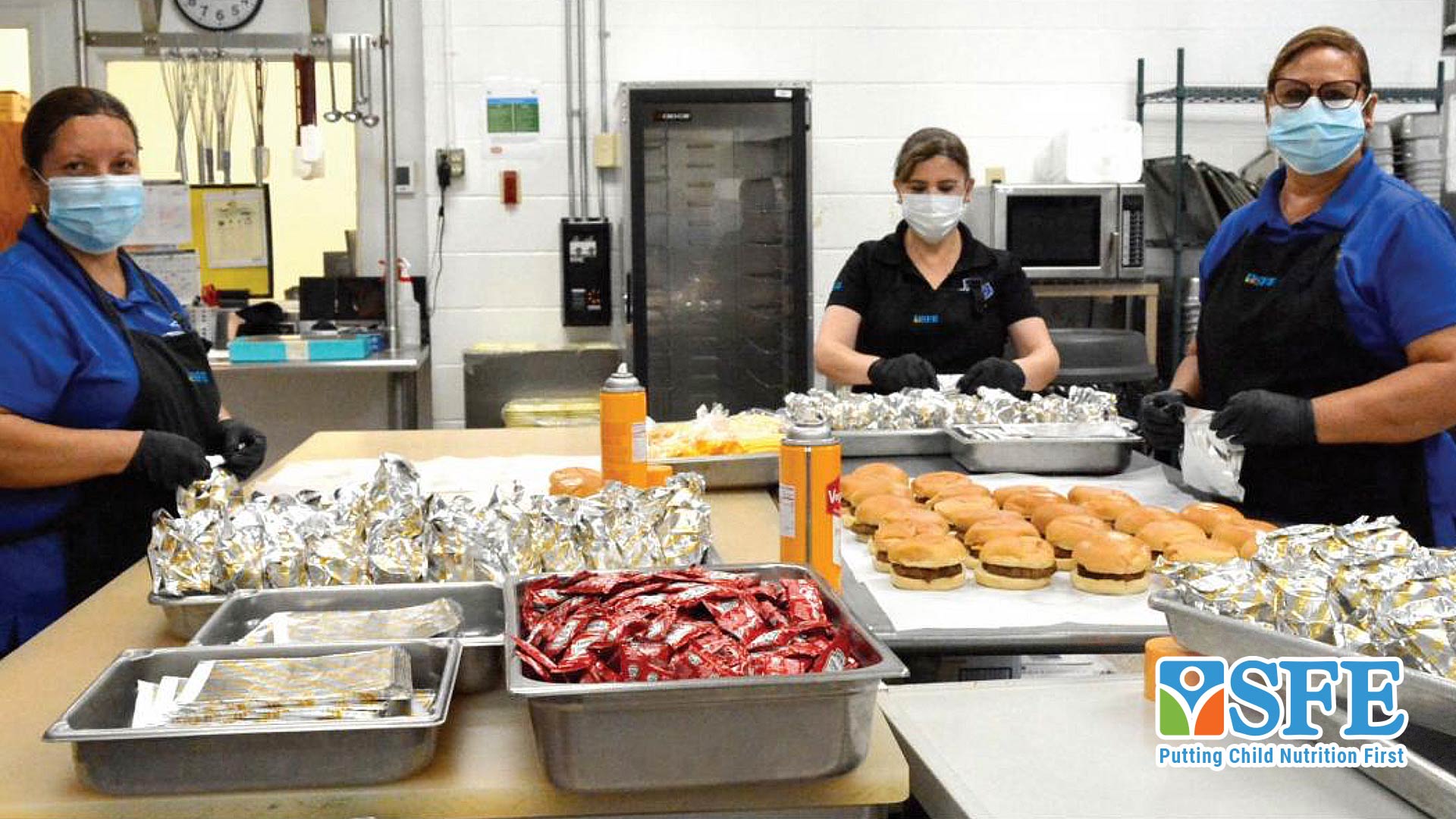
San Felipe Del Rio Consolidated Independent School District employees prepare a hot meal of cheeseburgers for thousands of students before they are delivered at midday.
The COVID-19 crisis left many Del Rio parents wondering how to feed their children, who were suddenly stranded at home when the San Felipe Del Rio Consolidated Independent School District ended in-classroom instruction as a precaution against the spread of the disease. The SFDRCISD, in collaboration with SFE Food Services, came to the rescue, providing breakfast and lunch meals to the children of Del Rio. The meals were provided free of charge to any child that attends school in the SFDRCISD. At first, the concept of delivering meals can be seen as obligatory, since home distance learning was students doing classwork in a remote setting, yet as the pandemic continued those meals have brought some sense of comfort to many parents.
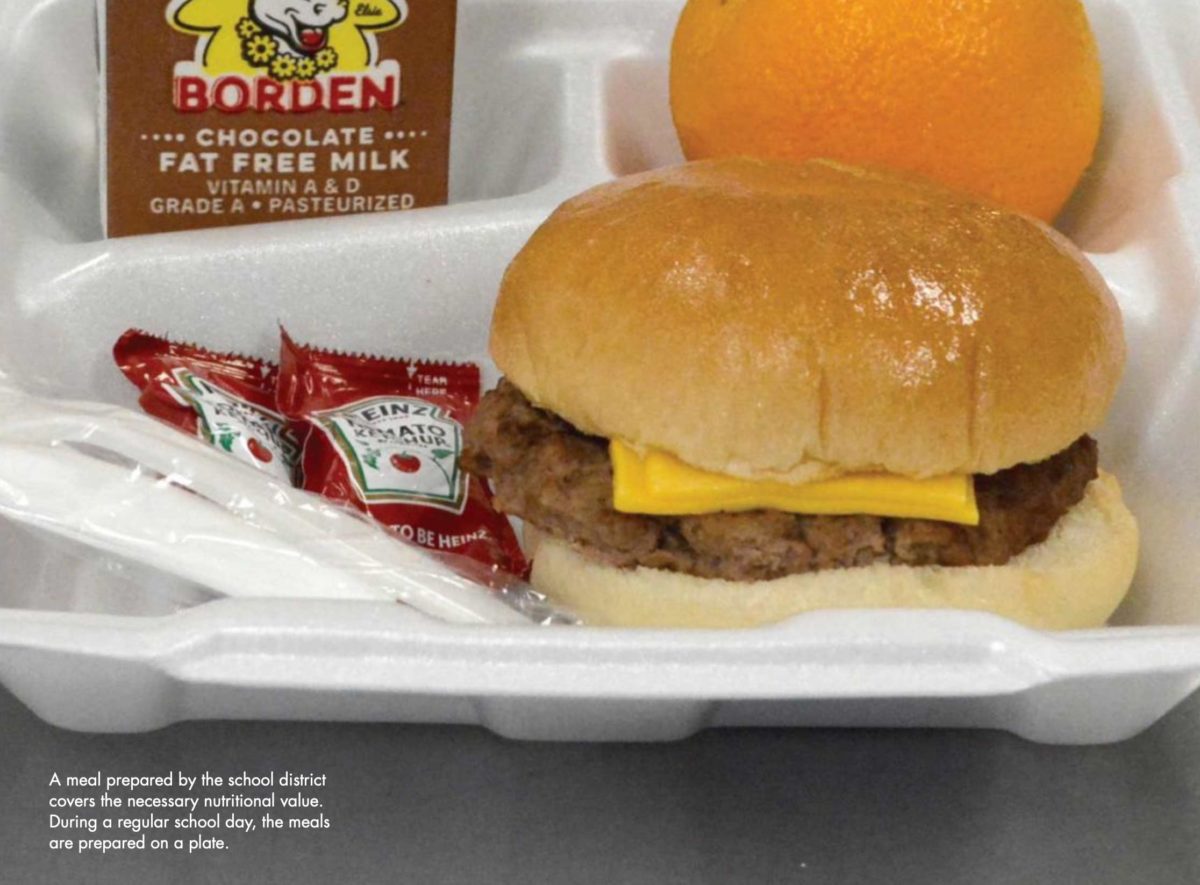
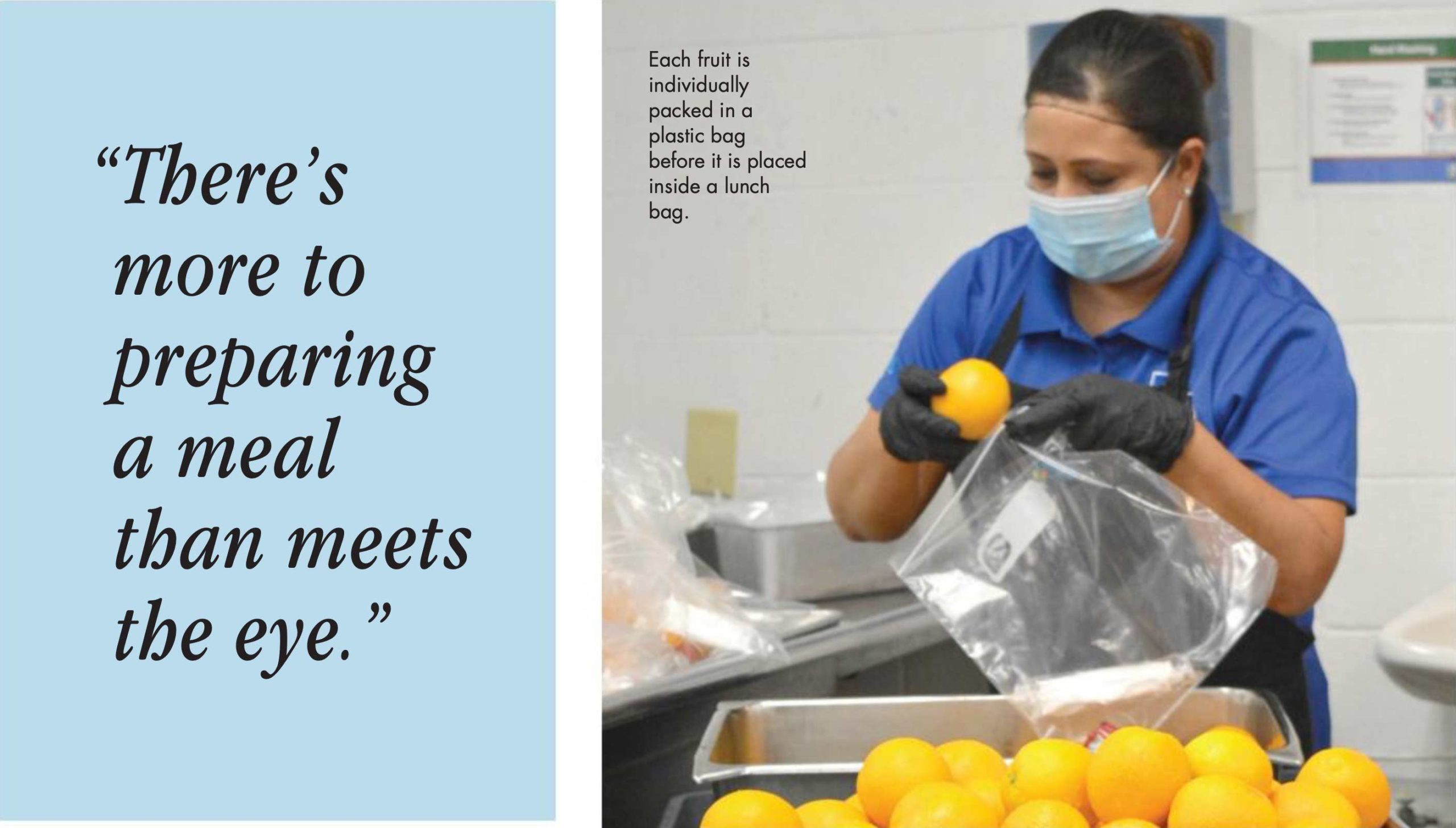
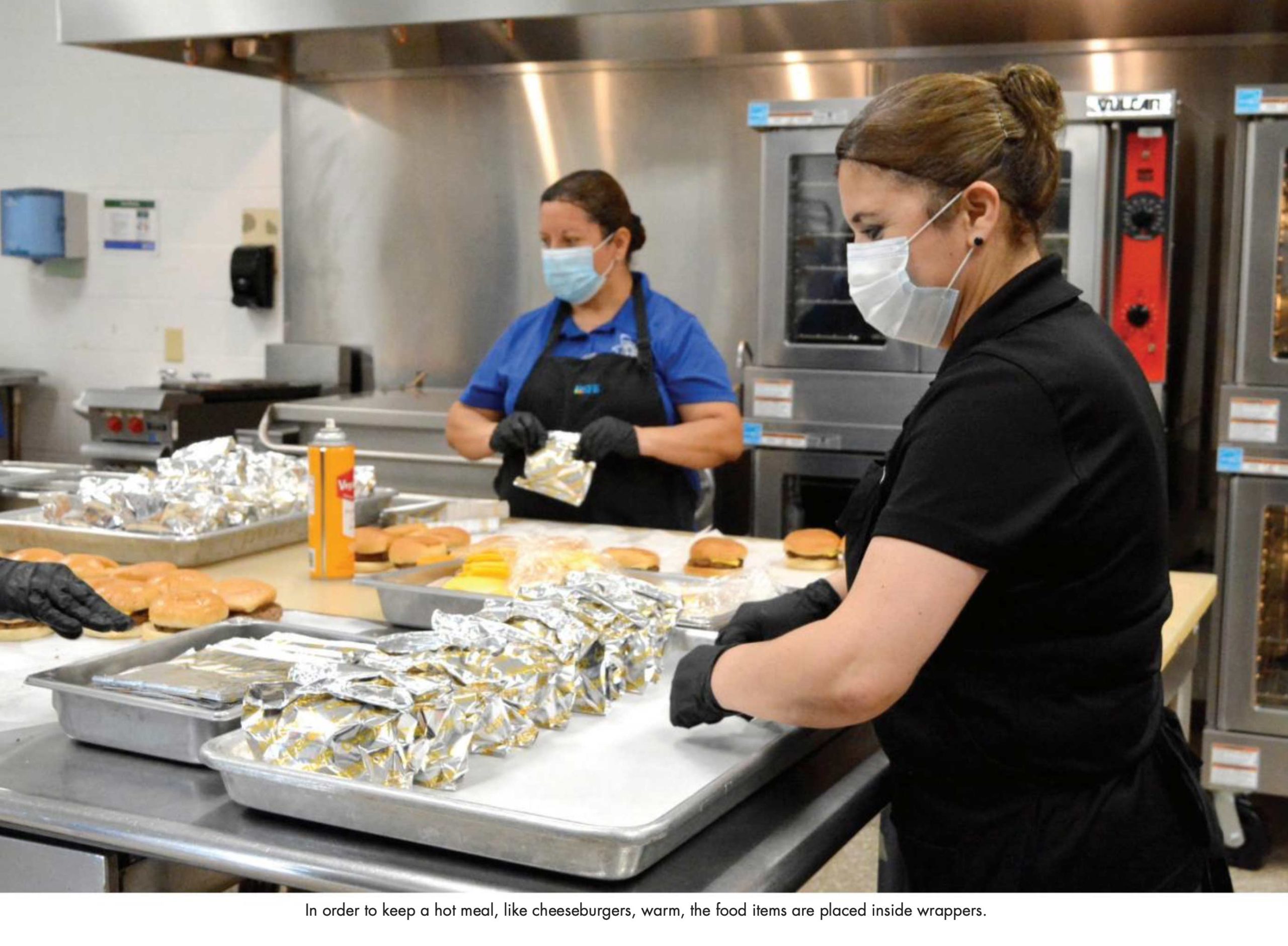
The meals program provided local parents with some relief, especially when they were being urged to stay home as much as possible under the declarations of disaster for public health emergency enacted by Val Verde County and by state regulations put in place by Texas Governor Greg Abbott. The demand for the meals began at a mere 10,000 meals during the first few weeks, as the school district began delivering meals on March 16. The demand increased as more children and parents sought to obtain meals throughout the week.
The school district has delivered approximately 30,000 meals each week since mid-April. David Perales, director of dining services for SFDRCISD, estimated 6,000 meals are delivered on a daily basis. Ninety-eight school employees help put together the meals and deliver them to the students. Each meal is composed of necessary nutrients for children, such as calcium, vitamin c and more.
Perales said adjustments have been made to the meals based on food availability and ensuring they meet the nutritional values necessary. On a normal school day, students would be able to choose from a few options available, with meal delivery they only receive the one type. The meals can either be hot or cold. Hot meals can consist of hamburgers, enchiladas, mashed potatoes and chicken tenders, while cold meals can consist of different types of sandwiches.
“We see a lot more meals served in the middle of the week,” Perales said. Each meal is served with the option of 1% milk, 2% milk or Juice. There’s more to preparing a meal than meets the eye.
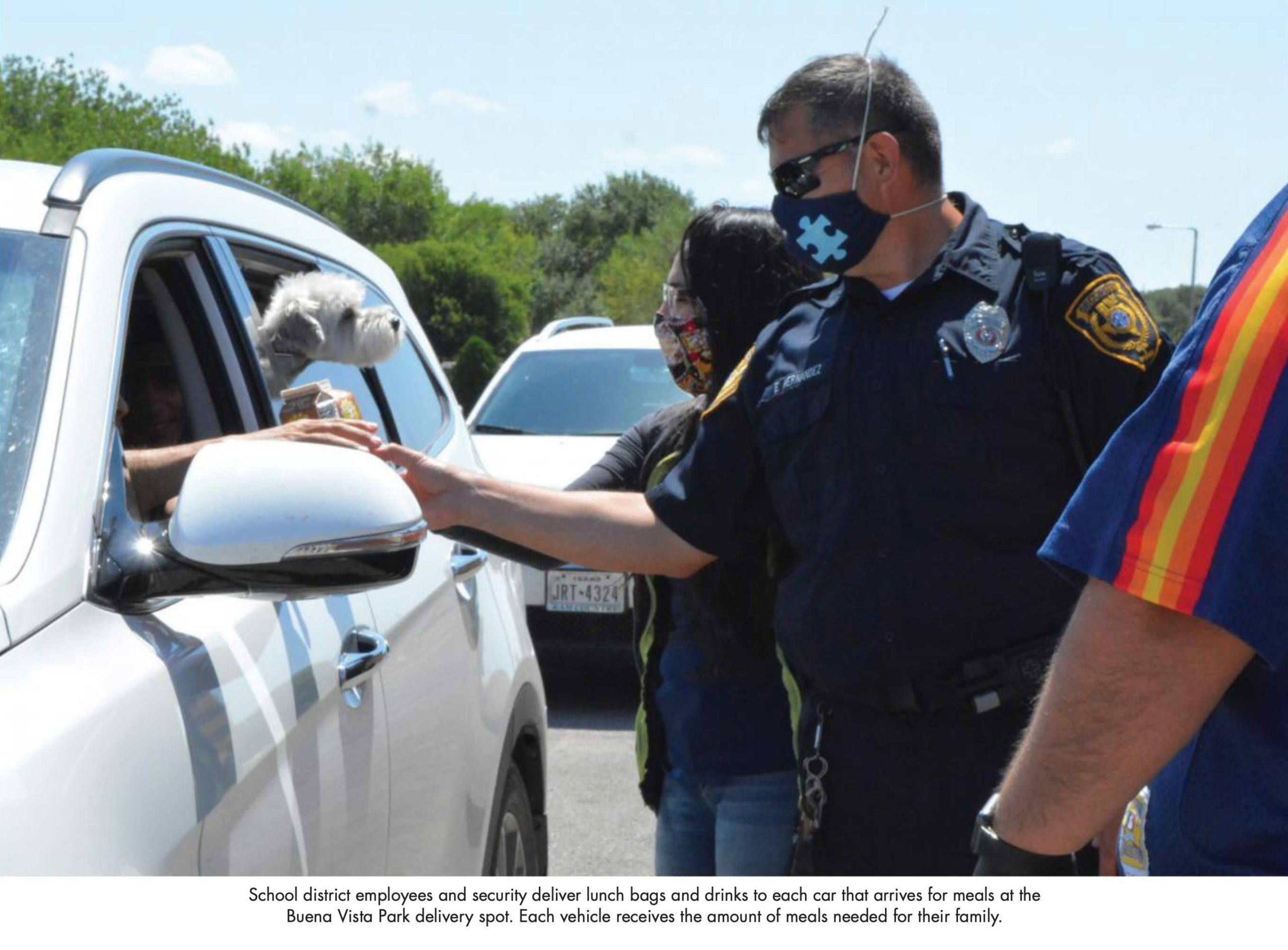
According to Perales, meal preparation is divided into two shifts, a breakfast shift from 6 a.m. to 10 a.m. and a lunch shift from 10 a.m. to 2 p.m.
“We split it up into two shifts; to minimize the number of people in the cafeteria and to help the ladies with the amount of volume we’re doing,” Perales said.
Within the city of Del Rio there are eight different areas for meal delivery, with 31 different locations split up between the areas. The amount of effort put into the meals does not go unnoticed. Perales added many of the bus drivers share compliments and similar stories of appreciation they receive from the public.
“We receive phone calls at the food service office from parents, even own staff, even people that saw something positive,” Perales said and added a few emails were sent regarding the positive action meal delivery. One Del Rioan took the opportunity to make the
employees smile, showing up one day during meal delivery dressed up as a velociraptor.
Perales and staff know of the online video featuring the dinosaur, and added the video was shared with the corporate office. Comic relief always makes the situation a little brighter, according to Perales.
While staff members say they miss seeing the children at school every day, it is the thought of keeping them fed and safe during this time that gives them the strength to carry through. •
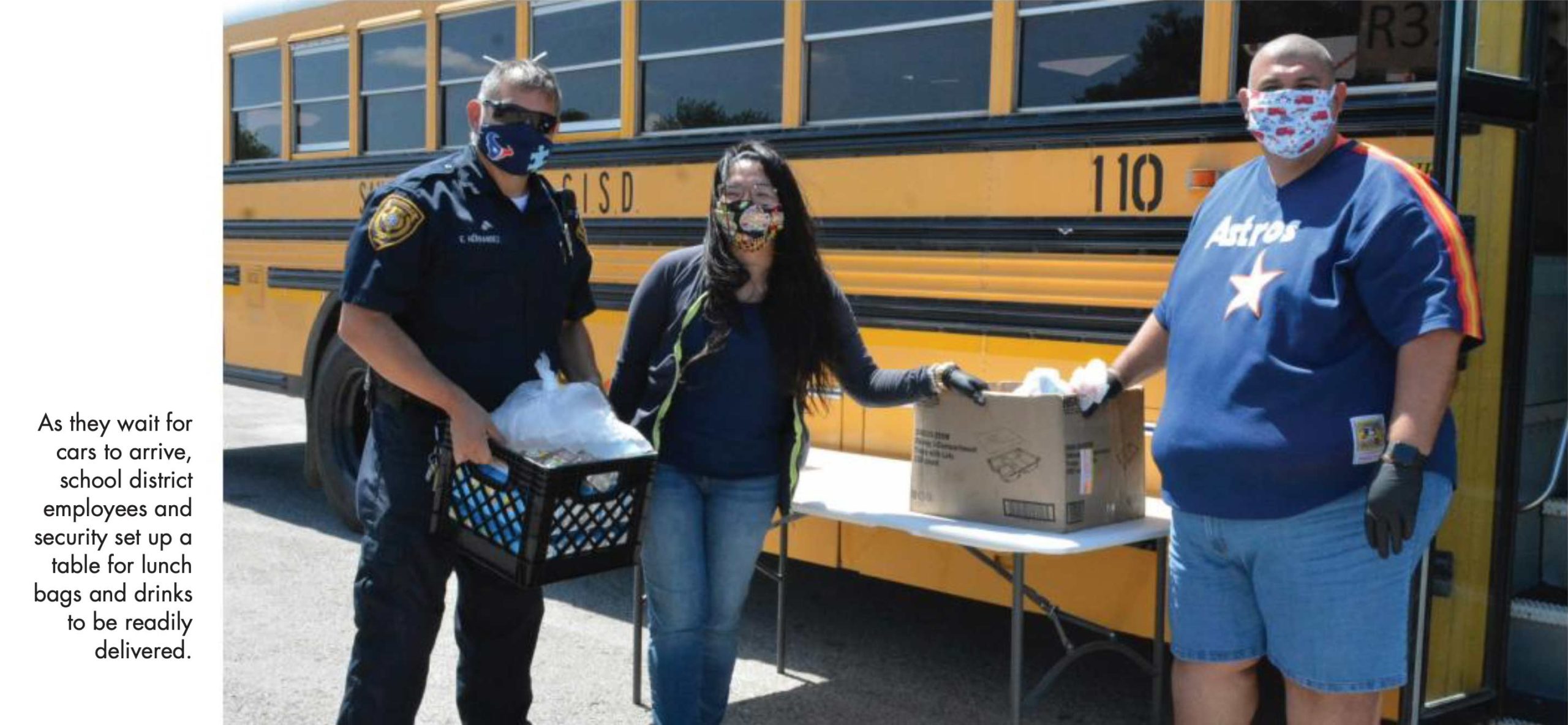
8 Essential Safety Tips for Serving K-12 Emergency Meals By Chef Nick Correa, Director of Safety and Sanitation (SFE)
Today, Southwest Foodservice Excellence (SFE) is hosting emergency feeding programs in 90% of our K-12 school districts, ensuring that our children are properly fed even during COVID-19- related school closures. Clearly, there’s never been a more important time to employ the highest of safety protocols. We want all employees and their families to stay safe and healthy! To that end, we offer these 8 key safety tips to all operators who are serving emergency meals in their communities:
8 Essential Serving Safety Tips:
- When employees show up at site, offer a questionnaire, and request that all employees check their temperatures on site to be sure they don’t have a fever. While it is illegal to ask an employee if he/she has COVID-19, it’s essential to quickly identify anyone who is presenting any symptoms of sickness-and compassionately and promptly send them home.
- Use an egg timer to be sure your team is consistently handwashing, sanitizing and disinfecting for the sufficient amount of time (20 seconds or more) to make those efforts as effective as possible.
- Ensure that all food is prepared with special attention to proper temperatures: Record food temperatures throughout preparation and service. (Store foods under refrigeration up to the point of service for cold foods; store hot foods in warming units at 135F or above.)
- Prep well ahead to fill all orders; getting behind can compromise safety.
- When serving, eliminate any unnecessary touch points for your entire team. (Example: Before you start service, prop open all doors.)
- Try to eliminate physical contact with anyone who is picking up meals. In addition to using gloves and masks, many of our serving teams place meals carts, so that parents can just pick these up with maximum social distancing from servers. At very least, don’t allow staff to reach over individuals in the car to place food.
- Draw sidewalk chalk lines or use tape lines to help those standing in line to consistently observe a 6ft separation between every person.
- Keep employee work groups small– and workstations spread out as far apart from each other as possible. (It is highly recommended to segregate your kitchen team from your serving team to avoid any contact between these teams.)
